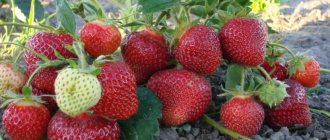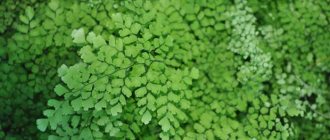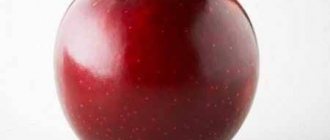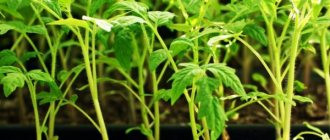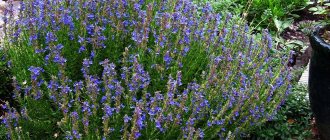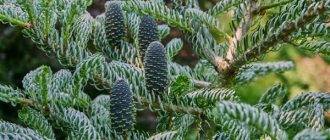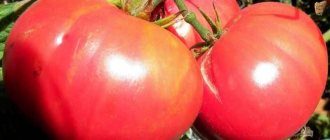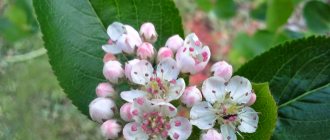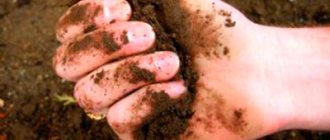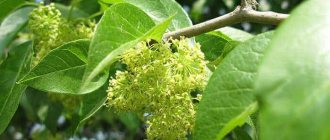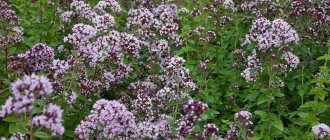Scorzonera - composition, description, medicinal properties: Instructions + Photos and Videos
Scorzonera (black carrot, black root, Spanish goat, darter, sweet root), a vegetable of the Asteraceae family, native to the Balkan Peninsula, Greece, Asia Minor and Transcaucasia.
For its medicinal properties it is widely used in folk medicine. The ancient Greeks recognized its healing properties and already at that time used the root vegetable as an antidote to the bite of poisonous snakes. Outwardly, it resembles a carrot with a black peel, but inside the fruit is juicy and white. Recently, scorzonera has become increasingly popular in Russia.
Scorzonera medicinal – what is it?
Scorzonera is a biennial plant, belongs to the Asteraceae family, and is resistant to sub-zero temperatures. It has a fleshy tap root, similar to a carrot, but covered with a black or dark brown peel, the core is white and juicy. The root is from 60 to 80 cm long.
Composition and medicinal properties
The chemical composition of this vegetable can treat many ailments and pathologies.
Ingredients: saccharides, pectin substances, vitamins C, B1, B2, E, PP, trace elements, zinc, potassium, manganese, phosphorus, iron and calcium, as well as insulin, a hormone capable of regulating blood glucose levels. What is especially important for people with the disease is diabetes. Eating black root gradually normalizes blood sugar levels. In addition to the above substances, scorzonera contains asparagine and levulin, substances that normalize the functioning of the heart and kidneys.
The calorie content of the product is low: 17 kcal per 100 g. Eating scorzonera normalizes metabolism.
Indications for use
- – heart disease, atherosclerosis, hypertension;
- – as an anesthetic;
- – to achieve a sedative effect;
- – to normalize the functioning of the gastrointestinal tract;
- – recommended for hypovitaminosis and anemia;
- – to remove stones from the kidneys and liver;
- – to enhance male potency;
- – to cleanse the body of free radicals;
- – for diabetes mellitus;
- – to stop the development of tumors and metastases;
- – to cleanse the body of radioactive elements.
It can be eaten raw, fried, baked, stewed or boiled. It has a bitter aftertaste, so before use it must be soaked in salt water for two to three hours.
Important: for older people, regular consumption of scorzonera helps prevent the onset of age-related diseases such as gout, rheumatism, sciatica, cardiovascular diseases, and diabetes.
Contraindications
Over the many years of consumption of scorzonera, there have been no recorded cases of negative effects on the body. Considered safe for both adults and children. But individual intolerance is possible.
Please note: the root vegetable has a laxative effect.
Description of the plant
In the cultivated state, scorzonera is a biennial plant.
In the first year of growth, it forms a rhizome, which is used as food. The root is long and thin, dark brown on the outside, but the flesh is white. Kozelets root vegetables are distinguished by a high content of carotene, inulin, levulin and asparagine, and contain other important vitamins and mineral elements - magnesium, potassium, phosphorus, iron.
In the second year of growth, the plant blooms and seeds can be collected from it.
Related article:
Planting garlic in the fall: tips for a rich harvest
Scorzonera is native to southern Europe and southwestern Asia. But now it grows throughout almost the entire European territory and has been cultivated as a vegetable.
Growing scorzonera
The seeds of this medicinal root vegetable can be purchased at any gardening store. Scorzonera is an unpretentious plant; it should be planted in early May, in holes two to three centimeters deep.
Use of scorzonera in folk medicine
Preparation for use : peel the Spanish goat, put it in water with the addition of salt, vinegar or citric acid for two hours.
When cleaning the plant, juice is released, which stains your hands brown, so we recommend using gloves when working with the root vegetable.
Scorzonera juice . Pour boiling water over the peeled roots and pass through a meat grinder. Squeeze the juice from the resulting mass. Take 1 tbsp for two to three weeks. spoons of juice mixed with 1 tbsp. spoon of honey. The juice is effective for urolithiasis. As a lotion, black carrot juice will help cope with periodontal disease, ulcers or non-healing wounds.
Decoction of black carrot roots . Pour boiling water (200 ml) over the washed, crushed root (1 tablespoon), put on low heat and cook for ten minutes. Remove from heat and let steep for another 10 minutes. Strain the resulting broth and take 1 tbsp 3 times a day. Recommended for bronchitis, radiation sickness, liver disease and joint diseases.
Decoction of young leaves . Indications for use: acute respiratory infections, purulent wounds and non-healing wounds, as well as for dermatological and joint diseases. Method of preparation: 1 tbsp. Grind dry leaves, pour 200 ml of boiling water and cook over low heat for 15 minutes. Then let it brew for half an hour.
Root tincture . Pour the crushed root (2 tbsp) into a thermos, pour one liter of boiling water and leave for 12 hours. Strain and take 1 tsp. half an hour before meals. The course of treatment is three weeks. Indications for use: diseases of the gastrointestinal tract, liver and gall bladder.
Tincture. Pour scorzonera roots (1 tbsp) with alcohol or vodka (200 ml), leave in a dark place for two weeks. The container must be shaken daily. Strain before use. Directions for use: rub on sore joints.
Ointment. Indications for use: for the treatment of joints with rheumatism, radiculitis, gout. Method of preparation: dry powder is made from scorzonera root, then mixed with melted pork fat. The resulting ointment is used as a rub on sore spots.
Compress. The leaves of the sweet root are doused with boiling water and allowed to cool slightly, then applied to the sore joints.
Tea. Mix 1 tsp. dry crushed scorzonera root with 1 tsp. brewed tea, pour boiling water over it and drink like regular tea. It is an excellent remedy for toxicosis.
Use in cooking
Raw black carrots are rarely used in cooking in their raw form, as they taste like cabbage stalks. But sometimes scorzonera and its leaves are used as a component for summer salads.
The vegetable is pre-soaked in salt water and grated. Also, Spanish goat is subjected to various heat treatments (stewing, boiling, frying).
Article on the topic: Backout tree (backout) - useful properties, description
The root vegetable is great for preparing various sauces that add an interesting taste to meat and vegetable dishes. Scorzonera can be canned and frozen, so you can benefit from this root vegetable all year round. When dried and chopped, black carrots make an excellent seasoning for many dishes.
Recipes for the simplest and most popular scorzonera dishes
- Boiled. Peel the root vegetables, rinse and place in water, add a little citric acid to it. Boil, then fry in butter, adding spices to taste.
- Baked. Place peeled and chopped pieces of scorzonera in a baking dish, pour over cream and bake in the oven at 160 degrees for 20 minutes. then sprinkle with grated Parmesan and bake until golden brown.
- Black carrot omelette Sauté the chopped root vegetable in a frying pan with butter. Separately, beat a couple of eggs with milk and mix with scorzonera. And bake an omelette for a couple.
- Soup. Boil chopped root vegetables in meat or chicken broth. Then remove the scorzonera from the soup and rub through either a sieve or a blender. And place it back into the pan. Add yolk, sour cream, herbs and salt.
- Diet. Black carrots are often an essential component of dietary dishes.
Useful properties of the plant
Such a successful combination of beneficial substances gives an amazing effect, manifested in the form of miraculous properties. Scorzonera is effective in the following cases:
- to normalize sugar levels;
- when cleansing the body of toxins and radionuclides;
- helps stimulate the heart;
- helps remove stones from the kidneys and gall bladder;
- has a positive effect in the fight against alcoholism;
- enhances male potency, helps with prostatitis;
- normalizes the functioning of the liver and kidneys;
- acts as a sedative;
- effective as an anesthetic;
- inhibits the development of a number of diseases - hypertension, diabetes, rheumatism, gout and others;
- relieves toxicosis during pregnancy;
- helps in the treatment of skin diseases;
- recommended for joint diseases;
- prescribed for oncological diseases;
- normalizes metabolism;
- useful for colds and bronchitis.
Storage rules
Harvesting must be done in late autumn before the onset of the first frost. Otherwise, the earth will harden and when extracting a root from it, there is a risk that the skin of the root vegetable will be damaged, which means that such a vegetable cannot be stored.
There are several known ways to store root vegetables:
- Boxes with sand, the harvested crop must be placed vertically in wet sand. It is important that the sand remains moist throughout the storage period.
- The collected root vegetables are thoroughly dried, the leaves are cut off and tied into bundles, sprinkled with compost.
- Root crops are highly resistant to frost, so they can be left in the ground for the winter. It is necessary to insulate the top with straw. The taste of such black carrots will even improve.
- Collected root vegetables can be frozen, while all medicinal and nutritional properties are preserved.
- Scorzonera can be dried, and, as in the freezing method, all the necessary properties of the root vegetable are preserved. To do this, thoroughly wash, dry, peel, cut or grate the Spanish goat. Then place on paper and dry in a warm, ventilated room, in an oven or dryer until all the moisture has evaporated. Then store in an airtight container.
Calorie content and chemical composition of scorzonera
Scorzonera is low in calories - 100 g contains 17 kcal (which, combined with healthy fiber and excellent taste, is attractive for those who want to lose weight). What black root is can be understood by familiarizing itself with its chemical composition. He's impressive. It’s not for nothing that black carrots are called “a pharmacy in one plant”:
- vitamins (B1, B2, B6, C, PP, E);
saccharides (20% by weight of the root);
micro- and macroelements (phosphorus, copper, iron, calcium, manganese, potassium, calcium, zinc, etc.);
It is the last three components that scorzonera contains, in combination with minerals and vitamins, that have the same healing effect, which is why this plant is compared to ginseng.
SCORZONERA - biological characteristics and cultivation techniques
The healing properties of scorzonera have been known since ancient times. It was believed that this plant acts as an antidote and has the ability to remove toxic substances from the body. Today we will share with you the features of growing this crop and recipes for scorzonera dishes.
Authors: V.G. Suzan, Doctor of Agricultural Sciences
V.A.
Kryuchkov, Candidate of Biological Sciences Scorzonera is a perennial herbaceous plant from the Asteraceae family, one of the rare vegetable crops. They eat fleshy, cylindrical root vegetables with a diameter of 2-4 cm and a length of 30 cm or more. People call it black root, sweet root (for the taste of the root pulp). Its pulp is white, tender, very juicy, rich in milky juice. When raw, it has a sweetish taste and resembles a cabbage stump.
It is found in the Caucasus, Siberia, and the steppes of Ukraine and has long been considered a medicinal plant. It was used for snake bites, heart disease, eye and nerve diseases. As a vegetable, scorzonera began to be grown in Spain in the 17th century. It is cultivated as a vegetable root crop in Europe, America and other countries.
In culture, scorzonera is bred as a biennial plant. In the first year, a rosette of leaves and a long black root crop are formed, in the second year of life a stem up to 100 cm high, flowers and seeds. Due to the abundance of nutrients valuable for the body, scorzonera is often classified as a dietary vegetable, this is explained by the high content of inulin (29-40%), which has a beneficial effect on diabetes, asporagine, etc. (up to 1.5%), contains vitamins B1, B2, C, E, PP, β carotene), 25% starch, sugar, mineral salts of potassium (320 mg%), magnesium, phosphorus, iron, tannins and other protective substances.
Scorzonera grows well in all soils, worse in sandy ones. To obtain large root crops, it is placed on loose, fertile soils, cultivated to a depth of 35-40 cm. On hard clay soils, the root crops are branched, overgrown with small roots. In the fall, humus should be added to the plots; fresh manure is not suitable for scorzonera.
Seeds remain viable for 2 years. Sow in early spring. Sowing in rows, with a distance between rows of 15-20 cm, in a row between plants - 10-12 cm; planting depth is 2-3 cm. Shoots appear after 2 weeks. When the crops are thickened, small root crops are formed. Caring for scorzonera is usual - weeding, watering, loosening. It tolerates frost well.
Harvest in autumn or early spring after overwintering. Root crops are harvested in dry weather 100-120 days after emergence. The roots are dug up carefully, as they quickly break, and if the skin is damaged, milky juice flows out of them and then they are poorly stored in winter. Leaves are trimmed without damaging the roots. Scorzonera root vegetables are stored in sand or boxes with plastic liners.
You can not remove the scorzonera in the fall, but leave it for the winter. In spring, the plants quickly grow overgrown, the root crop grows, and a peduncle forms. Seeds are produced in large quantities and ripen in July. Unlike other vegetables, “flowering” does not impair the quality of the root crop. They still remain juicy and tasty.
Scorzonera is a winter delicacy vegetable. It tastes like asparagus and is sometimes called winter asparagus. Before eating, scorzonera is peeled, then boiled, stewed or fried.
When cooking, it is immersed in boiling salted water. To preserve the white color of the pulp, peeled root vegetables should be kept in acidified water. Scorzonera is added to salads, soups, and sauces. You can use it to make delicious confectionery, syrups, soft drinks, and candied fruits.
We recommend several recipes for preparing scorzonera dishes:
Scorzonera stew.
The root vegetables are peeled, kept in a little water, and then boiled in salted water until tender. To preserve the white color of the pulp, it is slightly acidified with citric acid or vinegar. Boiled root vegetables are fried with butter and breadcrumbs.
Scorzonera salad
Root vegetables are grated, seasoned with mayonnaise, lemon juice, and parsley.
Scorzonera soup.
Peeled and cut into pieces, boil the root vegetables until soft in salted water. Rub through a sieve and dip into the broth. Add parsley, egg yolk, season with butter, and when serving, sour cream.
Vegetable salad with scorzonera.
Fresh cabbage is peeled, washed, chopped into strips (dosage: 30 g). Wash the cucumbers and cut into thin slices (30 g). Green peas (or beans 12 g) are placed in the salad and seasoned with sour cream - 30 g. The salad is served with 1-2 eggs.
Use of scorzonera in folk medicine
Scorzonera is widely used in folk medicine - fresh juice, decoctions and tinctures from the plant are used here:
- Scorzonera juice. To prepare the juice, you need to wash the roots, peel them and pour boiling water over them. Twist them through a meat grinder and squeeze out the juice from the resulting mass. It helps to heal wounds and skin ulcers. Lotions with scorzonera juice help with periodontal disease. In case of urolithiasis, you need to mix the juice with honey (1x1). Drink a tablespoon before each meal for 2-3 weeks;
- decoction of leaves. 20 g of crushed dry scorzonera leaves should be boiled in 250 ml of water, boil for 15 minutes, leave for 30 minutes. Strain before use. Used for colds, wipe insect bites, and wash abscessing wounds. Added to baths for the treatment of diathesis, gout and polyarthritis;
- decoction of roots. To prepare the decoction, you need to peel the rhizomes, wash them and chop them (1 tbsp), add boiling water (200 ml) and boil. Boil over low heat for 10 minutes, then wrap in heat and leave for 30 minutes. Drink 30 ml of decoction 3-4 times a day. Take medicine for bronchitis, in the treatment of the liver, joints, radiation exposure;
- water infusion of the root.At 2 tbsp. spoons of crushed root require a liter of boiling water. Place the raw materials in a thermos and fill with water. Leave overnight. It is prescribed to take a teaspoon half an hour before meals for three weeks, after a break (a week) repeat the treatment again. Helps with gallbladder and liver disease;
alcohol tincture (infuse for 7 days in the dark). Used for healing wounds, relieving attacks of radiculitis, rheumatism, treating furunculosis;compresses from leaves (leaves boiled in boiling water are wrapped in gauze). For arthritis, apply to the sore spot for 30 minutes;
- tea for toxicosis. Mix a teaspoon of dry tea leaves and crushed scorzonera root and brew like regular tea;
- ointment with scorzonera (mix pork fat with dry root powder). Use to treat joint pain and pustular skin diseases.
Article on the topic: Large gentian - useful properties, description
Use of scorzonera in cooking: how to prepare
Spanish Kozelets has a pleasant sweetish taste. In its raw form, to some it resembles the stalk of white cabbage, to others it resembles a young walnut.
To use raw scorzonera, the peeled root should first be soaked in salted water (eliminates the juice). For salads, it is better to use young root vegetables - they are more tender and juicy. Black carrots are best grated on a fine grater. Spanish goat can be combined with other vegetables and any dressings. Young scorzonera leaves are also used for spring salads. The recipes are simple:
ingredients - 150 g of peeled scorzonera roots, 10 lettuce leaves, onions, parsley and dill. Grate the root vegetables, chop the onions and herbs, tear the salad into pieces and mix everything. Add salt. Sometimes they put feta cheese in this salad (then you don’t have to add salt). Season with olive oil, sour cream, etc.;
carrot-scorzonera salad. Wash, peel and chop regular carrots and Spanish goat (1x1). Add herbs (dill, parsley, lettuce), lemon juice, salt, and mix. The salad is already ready. If desired, it can be seasoned with sour cream, mustard, etc.
After hot processing, scorzonera acquires a slight smell of vanilla (which will add some piquancy to the dishes in which it will be included - this should be taken into account) and the taste of boiled potatoes.
Baked scorzonera roots have a delicate taste. Pieces of root vegetables, having been peeled and boiled in advance, should be placed in a single layer in a heat-resistant form, poured with cream, placed in the oven and kept for 20 minutes at medium temperature. After this time, sprinkle with grated cheese (Parmesan) and place in the oven again (until a golden crust forms).
A very pleasant taste is obtained by combining Spanish goat and eggs, chicken, and fish. Black carrots are often included in dietary dishes, here is a description of several of them:
- omelette. Peel the black carrot root, lightly simmer with butter and grate. Beat eggs with milk, add grated root. The omelette is steamed;
bits. Pass the chicken pulp, fish fillet and scorzonera root through a meat grinder. Add melted butter and stir. The formed meatballs are steamed;
soup. Boil the Spanish goat until soft in meat (chicken) broth. After softening, remove some of the root vegetables, rub through a sieve and put them back into the pan. Before finishing cooking, add egg yolk, sour cream and parsley. In a bowl, the soup should be seasoned with butter.
The dried root (it can be easily ground into powder in a coffee grinder) is used as a seasoning for soups, stews, and gives a pleasant taste and smell. Pieces of chopped scorzonera leaves are used to seal cucumbers for the winter (together with currant, cherry, horseradish, etc. leaves). They give cucumbers elasticity and crunchiness.
Scorzonera or kozelec - black root, growing on your site
When in the spring of 1950 I received a plot of twelve acres of land for a garden in a collective gardening project, I was incredibly happy, because I had dreamed about this for a very long time. Having begun the development of my land, I, unlike many of my neighbors, did not confine myself only to my hundred square meters, but began to attend agricultural exhibitions - both ours, Leningrad, and even went to the capital. When I was in Moscow on business, I always found time to stop by VDNKh. And he did all this with one goal: not to “reinvent the wheel,” but to learn from the experience of others who have been mastering the agricultural business for many years and have good results.
I studied the best methods of growing various crops, and considered the possibilities of using these techniques on my acres. Moreover, I visited not only agricultural exhibitions, but also botanical gardens in Leningrad and Moscow. There I tried to see some rare vegetable plants that I could try to grow on the plot myself. And only after a detailed study of the possibility of using this plant on his land, he transferred it and prescribed it there either “permanently”, or after checking for productivity, excluded it from the list of cultivated crops. He paid special attention, of course, in addition to agricultural technology, to methods of protecting plants from pests and diseases. I must say that the use of the best technologies and new varieties in the beds immediately had a positive effect on the yield of the crops that I grew. And at the same time, I wanted to grow something that my neighbors don’t have.
At one of the exhibitions, I became interested in a strange vegetable plant with long black roots, unknown to me until then. It turns out that it was a less common vegetable plant called scorzonera (Scorzzonera hispanica, Lin.) - Spanish scorzonera. It also has other names - black root, sweet root, goat. The original name of the plant was given by the Italians for the similarity of the root crop with a black snake - scorzonera. It belongs to the genus of perennial herbs, the Astrov family.
I bought scorzonera seeds for my garden and tried to learn as much as possible about it. Scorzonera spanisha is a good honey plant. The most common biennial scorzonera spanisha is a sweet or black root. There are also other varieties, for example, the variety Ordinary, Vulcan, Russian Giant and others.
Scorzonera roots are edible, palatable after a little cooking, and due to the abundance of substances valuable for the body and health, it is considered a dietary vegetable , as it contains 19.6% dry matter, 1.04% protein, 0.5% fat. sugar - 2.19%, fiber - 2.27%, ash - 1.0%, it contains provitamin A, and also contains the carbohydrate inulin, recommended for diabetes or diabetes.
For many centuries, scorzonera has been revered as a miraculous remedy for heart, eye and nervous diseases. Scorzonera is recommended for baby food; to do this, it is peeled (black) and boiled in salted water. Root vegetables boiled in acidified water to preserve the white color of the pulp are then seasoned with oil. Scorzonera root vegetables can be added to salads and soups, to which they give a unique taste. If you add scorzonera roots to jars when pickling cucumbers, this will give them strength and an appetizing crunch.
Scorzonera is a perennial plant, but it is usually grown in gardens for two years. In the first year, fleshy long roots are obtained, in the second year - seeds. Some of the harvest can be harvested in the fall, and some can be left in the ground. Scorzonera can overwinter without shelter, and in the spring its roots can be dug up. But I would advise those who will grow this vegetable not to dig up all the plants, but simply to defuse the planting by removing part of the crop and leaving the other for seeds. It is no coincidence that I recommend doing this: scorzonera retains its seed germination period for a maximum of two years, but it is best to sow it with fresh seeds. Do you always find fresh scorzonera seeds in the store? That is why in the spring you need to leave some of the plants to get their seeds from them. From my own experience, I know that they mature on scorzonera in our region.
If you want to get large, long scorzonera root crops, then their seeds, regardless of the variety, should be sown in deeply cultivated beds (up to 30 cm), with loose, fertile soil, double-line tapes with a distance between rows of 25-30 cm (in rows 15-18 cm), and between the tapes 60 cm. Seeds can be sown already in April, as well as in early August (before winter) to a depth of 2.5-3 cm. Scorzonera sown in August remains in the ground for the winter (does not require shelter ), and by the next autumn, especially large and long root crops are formed on the grown plants. Scorzonera produces very tender and very juicy root vegetables, so when harvesting them you should try not to damage the black peel, since after the juice flows out they become less tasty and are worse stored in winter.
Scorzonera flowers have a pleasant vanilla scent and attract bees - for example, sometimes I even picked these flowers and put them in a bucket in a cucumber greenhouse to attract pollinators. After digging up the root crops, carefully, so as not to damage the skin and prevent milky juice from leaking out, cut off the tops 4 cm from the root crop. Sometimes it happens that in the very first summer the scorzonera begins to expel the trunk and blooms. So, unlike carrots, the root vegetable in this case still turns out to be of normal size and of high quality.
Scorzonera recipes
I wish you all good luck and harvest!
Alexander Malyukov, gardener, veteran of the Great Patriotic War
5966
Tags: scorzonera
Add new comment
Articles
Garden
Scorzonera or kozelec - black root, growing on your site
Growing grapes in the Leningrad region
The biggest misconception among gardeners is that grapes require complex care. But that's not true...
Growing rhododendrons in North-West Russia
Rhododendrons can grow successfully here too. You just need to figure out which varieties are suitable for our climate and learn how to care for them.
Medicinal properties of burdock
Large burdock is a plant familiar to everyone and very useful.
Wonderful vine clematis
Growing clematis near St. Petersburg and in the North-West of Russia
Rules for storing scorzonera
Harvesting occurs in November, before the onset of the first frosts - after frosts the earth will harden, and when trying to extract the root, its peel will be damaged. Such a root can no longer be stored. There are several ways in which you can preserve your scorzonera harvest and use it throughout the year:
- storage in boxes with sand. The collected root vegetables are placed vertically in damp sand (humidity should be maintained throughout the entire storage period);
storage in compost. The root crops are dried, the leaves are cut off, tied into bundles and sprinkled with compost;
wintering in the ground. Scorzonera is a cold-resistant plant, and the black root can easily overwinter in the ground (should be covered with straw on top). The taste of such scorzonera will even improve. In the spring, the roots, if not removed, will sprout young shoots (suitable for salads), but the taste of the root vegetables will deteriorate;
freezing Kozelets does not lose its nutritional and medicinal properties when frozen;
drying. The roots are washed, peeled, chopped or grated, laid out in a thin layer on paper, a baking sheet and dried in a warm and ventilated place (can be in an oven, dryer, etc.) until all the moisture has disappeared. Should be stored in an airtight container. You can grind it into powder in a coffee grinder. It should be borne in mind that the sweetish taste of the root vegetable will gradually disappear during storage.
Preparation and storage
Root crops are harvested before the onset of frost - in November. Since the roots are very fragile, they must be removed with extreme caution. If the root crop is damaged, it will begin to deteriorate in 2-3 days. There are several ways to store a valuable product:
- in boxes with wet sand, placing root vegetables there vertically;
- freezing vegetables;
- taking into account the fact that scorzonera is resistant to cold, it can be left to overwinter in the ground, covered with straw;
- you can dry the root vegetables, tie them up in several pieces and sprinkle them with compost;
- The washed roots are cleaned and ground with a grater or ground in a coffee grinder, the resulting raw material is dried in a warm place and stored in airtight containers.
In order for your health to remain strong for many years, it is necessary to maintain it with natural means. To do this, it is best to turn to the healing properties of nature's gifts. Pay attention to interesting information about the beneficial properties of currants, beloved by many, about the miraculous effect of spirulina on the body, and about the many ways to use Japanese sophora in the treatment of diseases.
How, dear readers, do you use the amazingly powerful root vegetable scorzonera? Does it help you treat the diseases described?
Spanish Scorzonera (Scorzonera hispanica)
Syn: goat, black root, sweet Spanish root, black carrot, scorzonera, goat.
Spanish scorzonera is a perennial herbaceous plant with a thick, fleshy cylindrical root, green or gray-green leaves, inflorescences - large single baskets and ribbed grayish seeds.
Table of contents
In medicine
The plant is not included in the State Pharmacopoeia of the Russian Federation and is not used in official medicine, but its medicinal properties are widely used in folk medicine.
Scorzonera has a whole range of medicinal properties. Thanks to this, the plant has long been used in folk medicine for various diseases of the cardiovascular, endocrine system and other diseases.
Spanish scorzonera root vegetables should be included in the diet of older people, as well as those with diabetes, obesity, liver disease and hypertension. Spanish goat root is also useful for vitamin deficiency, atherosclerosis, and anemia. Eating it inhibits the development of rheumatism, gout and polyarthritis. Scorzonera is well absorbed by the body and is therefore often recommended for dietary nutrition.
Contraindications and side effects
Consuming scorzonera in moderation is harmless. The exception is persons with individual intolerance to the substances that make up scorzonera root, as well as pregnant and lactating women and children.
In dietetics
In its raw form, scorzonera root has a not very pleasant taste, which is reminiscent of the taste of cabbage stalks. This is a dietary product - it contains only 17 kcal per 100 grams of root vegetables, so nutritionists recommend it as food for those who want to lose excess weight. In addition to its low calorie content, scorzonera root has the beneficial property of regulating blood sugar levels, the uncontrolled increase of which triggers the process of accumulation of fat deposits.
Article on the topic: Forget-me-not scorpion - useful properties, description
In cooking
Before cooking, scorzonera root vegetables must be peeled off the dark skin. In order to avoid darkening of the white pulp immediately after cleaning, you can process it in two ways. The first is to clean them immediately before use; after cleaning, they are immediately immersed in acidified vinegar or salted water. In the second case, washed, unpeeled root vegetables are dipped in boiling water, boiled almost until tender, then dipped in cold water and the skins are removed. After pre-processing, scorzonera Spanish root can be used to prepare a wide variety of dishes: casseroles, salads, omelettes, vinaigrettes and main courses.
In addition to eating raw, scorzonera root can be boiled in salted water - after processing in this way, it tastes like boiled cauliflower. After cooking, it can be added to soups, vegetable and meat dishes. When frozen or canned, scorzonera root retains its beneficial properties. Young leaves of Spanish goat also contain nutrients, so they can be added to salads as a vitamin mix.
Classification
Spanish scorzonera (lat. Scorzonera hispanica) is a species of herbaceous plants from the genus Scorzonera (lat. Scorzonera), the Aster family (lat. Asteraceae).
Botanical description
A perennial plant, it has a thick, fleshy cylindrical root. The stem of the plant can reach a height of 75 cm, is erect, and is usually densely covered with leaves. The branches of the stem are protruding.
Scorzonera leaves are green or gray-green, in the lower part of the stem ovate-lanceolate or oblong-lanceolate, pointed, with many veins, rough-serrated, with a long petiole, semi-stem-encompassing; The middle ones are stem-encompassing at the base, oblong-lanceolate, the upper ones are subulate.
The inflorescences are sparse, large single baskets at the ends of flowering branches. The involucre is 20-30 mm long, its leaves are ovate-pointed, slightly woolly-pubescent along the edges; reed flowers are light yellow, one and a half times larger than the involucre.
Scorzonera seeds are large, 15-20 mm long, about 1.5 mm thick, ribbed, grayish. Scorzonera spanisha blooms in May. The fruits ripen in May - June.
Spreading
The homeland of scorzonera is considered to be South-West Asia and Southern Europe. The plant grows in the steppe regions of Europe and is also found in Georgia and Azerbaijan. On the territory of Russia it grows in the European part, Dagestan, the foothills of the Caucasus, and Western Siberia. Currently cultivated in many countries.
Procurement of raw materials
Root crops can be harvested after two months of growth, but for storage they are usually harvested in the middle - end of September when they reach a weight of 100-150 g. To avoid lethargy, scorzonera root crops should not be kept in the ground either. During harvesting, the scorzonera root must be dug up, carefully freed from the soil and pulled out by hand so as not to damage it. Damaged root vegetables are not stored. Root vegetables are stored in boxes with sand. Only whole, undamaged, healthy root vegetables are placed in boxes with sand. Throughout the storage of scorzonera, the sand in the boxes should be kept moist.
Chemical composition
Scorzonera root vegetables contain saccharides (levulin and inulin - about 20%), pectin substances (up to 2%); vitamins C, B1, B2, E and PP, salts of copper, potassium, iron, manganese, phosphorus, zinc, calcium. In addition, asparagine was found in scorzonera.
Pharmacological properties
The therapeutic effects of scorzonera are due to the valuable nutrients included in its composition. Eating scorzonera helps regulate blood sugar levels and prevents insulin spikes. This property is provided by the polysaccharides levulin and inulin, which are part of the root vegetable. This medicinal property of scorzonera makes it an indispensable product for diabetics, people suffering from obesity and excess weight. Asparagine, which is part of scorzonera, makes it a valuable root vegetable for people with problems of the cardiovascular system and kidneys. Asparagine is an amino acid that strengthens the heart muscle and blood vessels, cleanses them of cholesterol and atherosclerotic plaques. In addition, asparagine has a positive effect on kidney function, helping the body cleanse the blood more efficiently. Due to the high content of vitamins C, B1, B2, E and PP, eating scorzonera has a positive effect on the formation of immunity, maintaining lipid balance, improving vascular elasticity and many other vital processes in the body. Thanks to the content of copper, potassium, iron, manganese, phosphorus, zinc, and calcium salts, Spanish goat stimulates the formation of blood cells, connective and bone tissue cells and improves metabolism in general.
Use in folk medicine
In folk medicine, scorzonera is widely used not only as food, but also as a remedy. For this purpose, a decoction of scorzonera root is used, which has a number of useful properties - diuretic, choleretic, diaphoretic, wound healing, and soothing. Also, a decoction of Spanish scorzonera helps with diseases of the liver, joints, cough and choking. Traditional healers also use it for vitamin deficiency, atherosclerosis and radiation damage.
In addition to the decoction, fresh juice of the Spanish scorzonera root is used in folk medicine. This remedy is used to heal wounds and skin ulcers. They can also be used to rinse your mouth and make applications in the treatment of diabetic periodontal disease.
GOAT, OR GOAT...
This crop has a lot of names - goat, goat, darter, black root (not to be confused with the weed - black root), black carrot, sweet Spanish root, scorzonera, scorzonera, etc. By the way, scorzonera means “black root” in Spanish. Scorzonera is native to the Mediterranean coast. It is well known since the time of Alexander the Great. It penetrated into Central Europe in ancient times. In the Middle Ages, it was especially popular both as a medicinal and as an edible plant. In our country, wild forms of scorzonera are widespread in the Caucasus. This plant is especially popular in Western Europe and the USA for its outstanding nutritional and medicinal qualities; in the 19th century it was sold in Moscow vegetable shops as an exquisite delicacy. But today Russian producers and consumers know it little and do not like it. Therefore, this plant is rarely found in collective gardens. It is usually cultivated in a one-year or two-year crop. In the first year it forms a rosette of leaves and a root crop, and in the second year it produces seeds. Scorzonera belongs to the Asteraceae family. This is a cold-resistant and frost-resistant plant. It loves moisture and does not tolerate shading, incl. thickened plantings and heavy soil contamination with weeds. Its growing season in the first year of life is 120–140 days, and in the second year – 120 days. The varietal composition of scorzonera is extremely poor. More often than others, specimens of local folk selection are found in gardens. Of the varieties, there are such varieties of scorzonera as Ordinary, Russian Giant, Vulcan, Ispolinsky. In the first year of life, scorzonera forms a rather powerful rosette of leaves. Its leaves are light green, lanceolate, oblong, pointed, with entire, slightly wavy edges. In the second year, new basal leaves and a heavily leafy, branched flowering stem up to 100 cm or more in height are formed. Individual plants may flower in the first year, but they must be removed as they produce coarse root crops. Scorzonera flowers are yellow, with a pleasant scent, collected in inflorescences, open from early morning until noon, then close. The general appearance of a ripe basket of flowers resembles a large dandelion inflorescence. Scorzonera seeds are yellowish-white, with “flights”, remain viable for no more than two years, but germinate well only in the first year, then their germination rate decreases greatly. In the first year of life, scorzonera forms a tap, cylindrical, fleshy root, covered with a suberized black or dark brown peel. It is because of this that the plant received the name “black root”. On loose, deeply cultivated soils, the length of the root reaches 35 cm or more, and the thickness is up to 3–4 cm. The pulp of this root is white, dense, tender, and when cut it abundantly secretes milky juice. Scorzonera has a very rich chemical composition. It contains up to 20% dry matter and up to 10% sugars, proteins, fats, carotene, vitamins C, B1, B2 and others. It has the richest mineral composition: potassium - 320 mg%, magnesium - 23 mg%, calcium 53 mg%, phosphorus - 75 mg%, iron - 3 mg%, etc. And the high healing properties of the plant are explained by the presence of a large amount of inulin in scorzonera, which consists almost entirely of fructose. Scorzonera has the ability to regulate metabolism. That is why it is especially useful for diabetes, surpassing all other garden vegetables in this regard. It is interesting that in Russia this crop was initially grown as fodder and partly medicinal. But, unfortunately, scorzonera is still not widely used. Even the most inquisitive gardeners are almost unfamiliar with this interesting plant and are very reluctant to acquire it, despite the high taste, nutritional and, most importantly, medicinal qualities of the root vegetable. Scorzonera eats a fleshy root vegetable rich in milky juice. It is very easily absorbed by the body, extremely healthy and valued as a high-calorie, dietary, tasty product. Thanks to the milky juice, the root vegetables are tender and pleasant to the taste, and in winter they are considered a real delicacy. Scorzonera braised in oil resembles asparagus, so it can replace this even rarer curiosity. And the root vegetable boiled in salted water and fried in butter is an excellent seasoning for all main courses. Dried scorzonera will enrich the soup mixture. A delicious salad is prepared from young bleached leaves. When cooking, it is advisable to add lemon juice or lemon peel to it. The dried root vegetable will enrich any soup mixture. And from young bleached scorzonera leaves you can make a wonderful salad. Growing Scorzonera is a fairly cold-resistant and drought-resistant plant. Its seedlings tolerate long cold spells and light spring frosts. And its seeds begin to germinate at a temperature of 5–6 degrees. The most suitable for growing scorzonera are open, flat areas with light or medium loamy soils with a deep humus layer, low groundwater levels and neutral soil reaction. But since scorzonera does not tolerate liming, the soil is limed for the previous crop. Only on such soil can you get long and thick root crops. Scorzonera also grows well on developed peat bogs. And on compacted soils, its roots form crooked and very branched. Scorzonera does not like fresh manure, but grows well in the second year after it is added to the soil. Therefore, it grows best after those plants under which a lot of organic matter was added. The best predecessors for scorzonera are cucumbers, pumpkin, potatoes, onions, beans, lettuce, onions, etc. You cannot grow it after carrots, celery, tomatoes, spinach and various types of cabbage, because... they have common diseases and pests. Preparing the soil for growing scorzonera begins in the fall, immediately after harvesting the predecessor. The soil is dug up to the maximum possible depth (up to 35–40 cm). On compacted soils, the plant forms twisted roots overgrown with small roots, which sharply reduces marketable quality. For autumn digging, pre-apply 1 sq. meter, half a bucket of rotted compost, 1 tablespoon of superphosphate and potash fertilizers and, if necessary, lime materials. Potash fertilizers containing chlorine must be applied only in the fall, so that the chlorine is washed into the deep layers of the soil before spring. In spring, the soil is dug up again to a depth of 20 cm, adding per 1 square meter. meter of 2–3 kg of humus and half a teaspoon of urea. Then the soil surface is leveled. Scorzonera grows especially well after crops to which organic fertilizers have been generously applied. You should not fertilize scorzonera with fresh manure, as this will cause the root crops to take on an ugly shape. Sow scorzonera in early spring or late July. Winter sowing is also practiced when persistent frosts occur. But the experience of amateurs growing this crop shows that large root crops can only be obtained by sowing seeds early, as soon as the soil dries, and then covering the bed with film on wire arches. When sown in summer, the root crops are small, but they overwinter well in the soil if they are well covered and reach their greatest mass next year... V.G. Saffron
